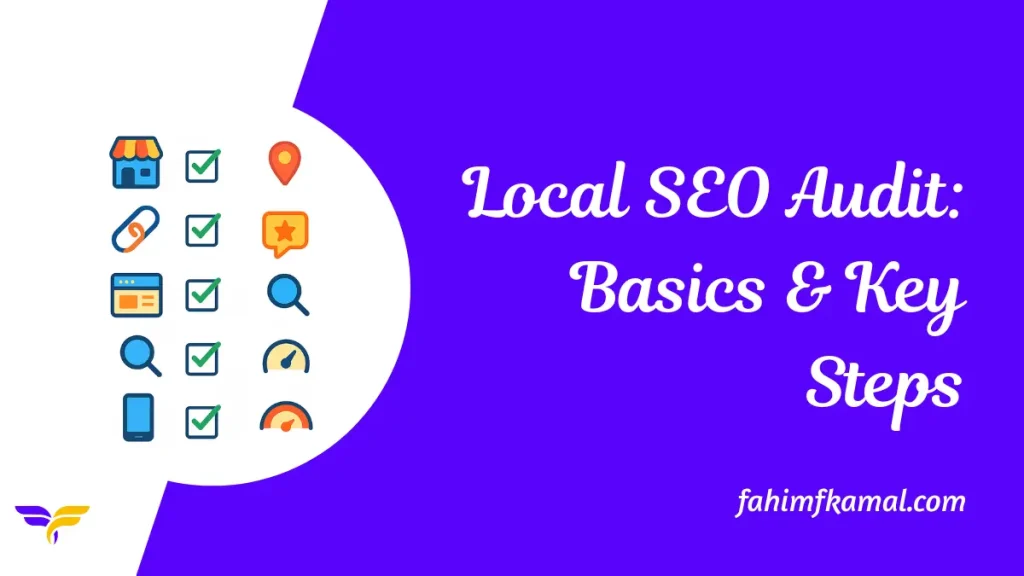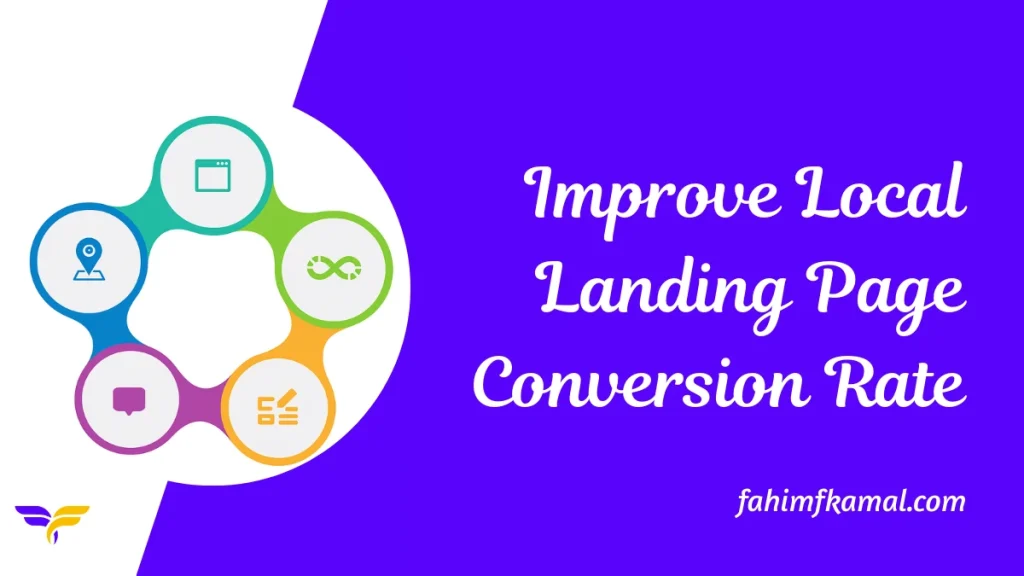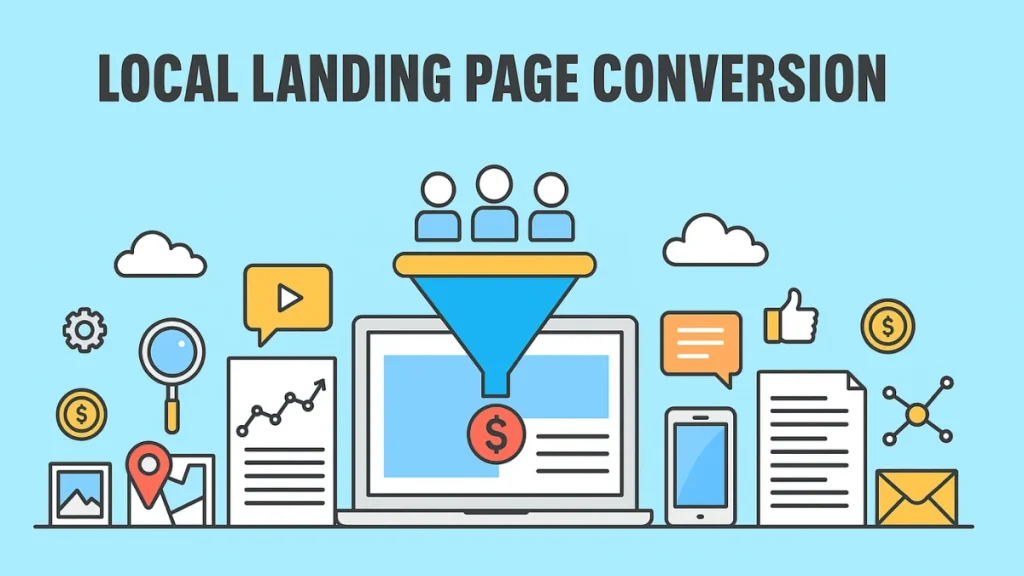Local SEO Audit: What It Is, Why It Matters, and Key Steps
A Local SEO Audit is an evaluation of how well your business shows up in local search results. It checks things like your Google Business Profile, local search rankings, and citations.
You want people nearby to find your business first. Local visibility lets small business owners connect with customers searching nearby.
This blog shows what an SEO audit is and why a Local SEO Audit matters. I’ll guide you through key steps so you can improve how your small business appears in local search results.
What is an SEO Audit?
An SEO audit is a full check of your website to find how well it ranks on search engines. It looks for issues that block visibility and traffic.
It covers three main parts: technical, on-page, and off-page. Each part plays a specific role.
Key Components
- Technical: It checks site speed, mobile friendliness, crawlability, HTTPS status, URL structure, XML sitemap, and robots.txt.
- On-Page: It audits meta tags, headings, content quality, keyword usage, internal linking, and image alt text.
- Off-Page: It reviews backlinks, social mentions, domain authority, and online reputation.
Why Audits Help Websites Perform Better
I see audits help small business websites by:
- Finding errors that hurt search engine visibility (slow pages, broken links).
- Showing places to improve content so it answers what people search for.
- Building trust with search engines by cleaning up harmful backlinks or fixing technical problems.
- Giving insight into keyword performance and how to use local keywords in content.
What is a Local SEO Audit?
A Local SEO Audit is a review that checks how well your business appears in local search results. It looks at things like your Google Business Profile, local keywords, and customer reviews.
This audit is important for small businesses aiming to attract customers nearby. It helps ensure your business information is accurate and consistent across the web, making it easier for local customers to find you.
SEO Audit vs Local SEO Audit
An SEO audit evaluates your website’s overall performance. It helps improve visibility across all search results. It focuses on elements like site speed, mobile-friendliness, keyword optimization, and backlink quality. This audit aims to enhance your site’s ranking on a national or global scale.
A Local SEO audit targets factors that influence your business’s presence in local search results. It checks your Google Business Profile, local keywords, customer reviews, and local citations. These ensure your business appears in searches relevant to your area.
In short, both audits boost online visibility. SEO audits cover a broad scope. Local SEO audits focus on factors that attract nearby customers.
How to Do a Local SEO Audit (Step-by-Step)
Performing a Local SEO Audit helps your business show up better in local search results. It ensures your business information is correct, your website is optimized, and your online presence attracts potential customers nearby. Here are five key steps to follow.
1. Google Business Profile (GBP) Audit
Check your Google Business Profile for accuracy. Make sure your business name, address, phone number, and website link are correct. Update your business hours, add high-quality images, and verify your categories. Regularly post updates to engage customers and maintain trust with local search engines.
2. Website Audit
Review your website for speed, mobile usability, and security. Ensure all pages load quickly and the content is easy to read. Check internal links, meta titles, and headings for proper keyword usage. Use Google Analytics to track visitor behavior and identify pages needing improvement.
3. Citation Profile Audit
Audit your business listings across local directories. Ensure your NAP (Name, Address, Phone) details are consistent everywhere. Remove duplicate or outdated listings. Accurate citations help search engines trust your business and improve your local search ranking.
4. Social Profile Audit
Check your social media profiles for consistency with your business information. Update bios, contact details, and website links. Actively post content that highlights your business and local events. Social engagement signals can influence local search visibility and attract potential customers.
5. Backlink Audit
Examine backlinks pointing to your website. Remove spammy or low-quality links that may harm your local rankings. Build quality backlinks from local businesses, directories, or event partnerships. Strong local backlinks boost your authority and help your business appear higher in local search results.
FAQs
1. What is the purpose of a local SEO audit?
A local SEO audit evaluates your business’s online presence to ensure it appears in local search results. It helps identify areas for improvement, such as inconsistent business information or missed opportunities, to enhance visibility and attract nearby customers.
2. Can I do local SEO myself?
Yes, with the right resources and tools, you can manage local SEO. However, it requires time and knowledge to implement effectively.
3. Are local SEO audits worth it?
Absolutely. Local SEO audits help improve visibility, attract nearby customers, and enhance online presence, offering long-term value for small businesses.
4. How often should I do a local SEO audit?
Conduct a major audit once or twice a year, supplemented by quarterly checks to ensure consistent performance and adapt to changes.
5. What are the most effective tools for local SEO audits?
Tools like BrightLocal, Moz Local, and SEMrush offer powerful features for local SEO audits, helping identify and resolve issues effectively.
6. What mistakes should I avoid in a local SEO audit?
Avoid overlooking NAP consistency, neglecting Google Business Profile optimization, ignoring customer reviews, and failing to monitor performance regularly.
Key Takeaways
- Running a Local SEO Audit helps your business appear in local search results and attract nearby customers.
- Consistent business information, updated Google Business Profile, and accurate citations improve trust and local search rankings.
- Regular audits highlight areas to improve your website, content, and online presence for better local visibility.
A Local SEO Audit is essential for every local business. It strengthens online presence, builds trust, and helps connect with potential customers nearby. If you want guidance or a review from a Local SEO expert, I can help you get started.

Fahim Foysal Kamal is a dedicated Local SEO Specialist based in Sylhet, Bangladesh. His work focuses on enhancing online visibility for small businesses and e-commerce platforms. This includes leveraging the latest trends like AEO and GEO. The services he provides include Google Business Profile optimization, local keyword research, on-page SEO, and technical SEO. His main passion is helping businesses grow by improving their search rankings and online presence.
Local SEO Audit: What It Is, Why It Matters, and Key Steps Read More »



